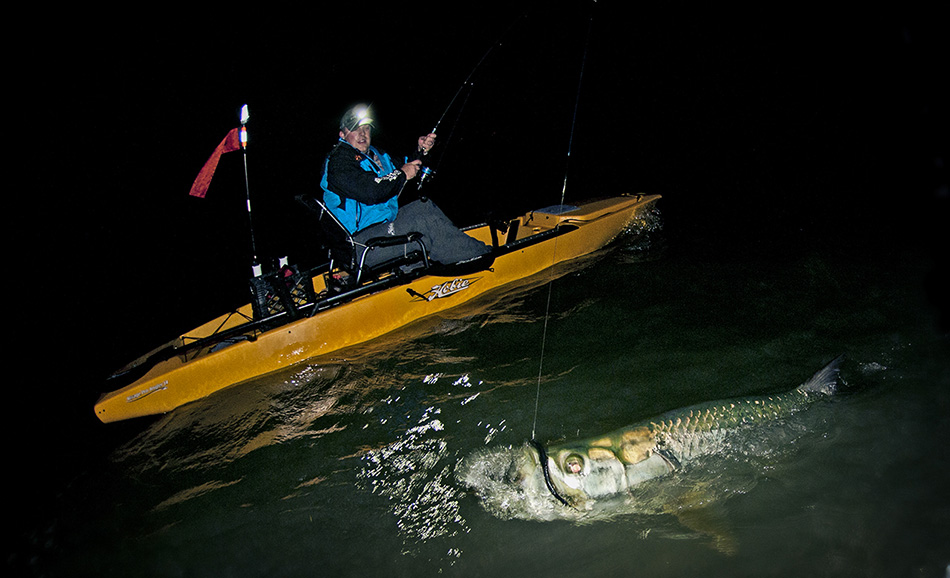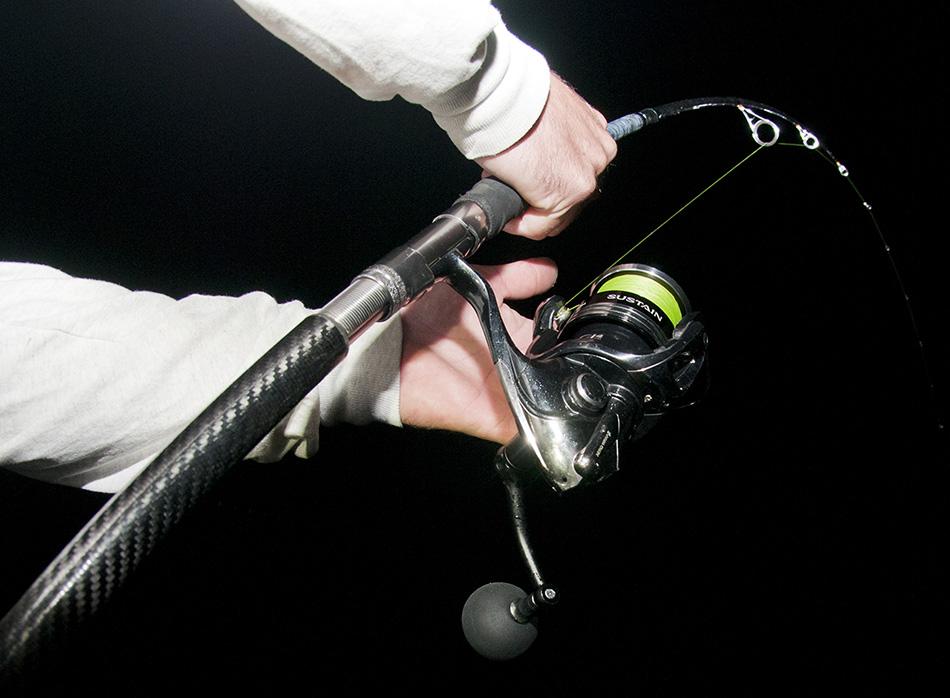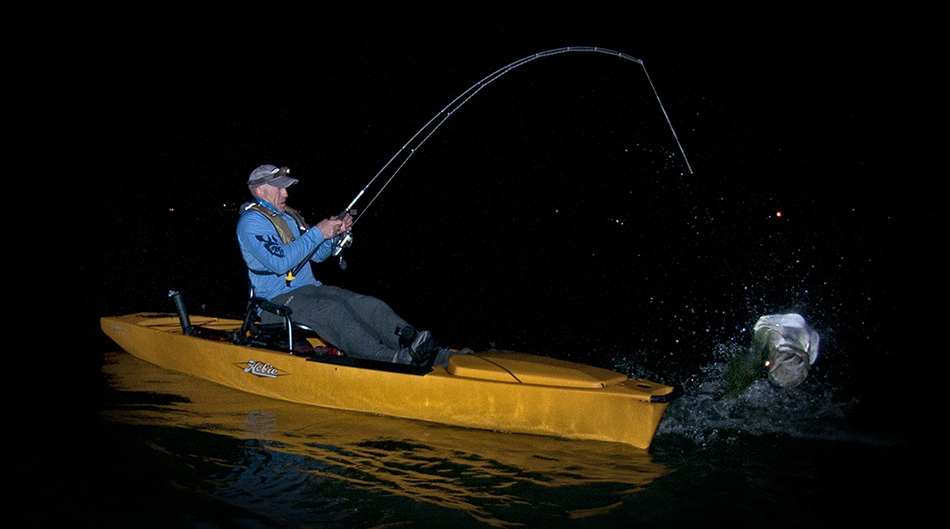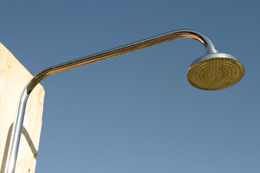
BIG BAIT, BIGGER FISH: GALLAGHER AND HIS HOGY EATER. PHOTO BY ROSS GALLAGHER
It’s been nearly a decade since I hooked into my first tarpon. I was a saltwater novice, recently transplanted from the midwest to the sub-tropics of southwest Florida. During that time, I had frequented the long fishing pier of Pt. Ybel at the southern most tip of Sanibel Island. The iconic stretch of weathered planks and concrete offered shore bound anglers a chance at a variety of species, including the mighty silver king.
It was a mid April morning in 2006. The blue waters of San Carlos Bay were slick with only the rolling tide shifting the water’s surface. Armed with my mightiest freshwater tackle, a St. Croix E-Cat series rod and Shakespeare Tidewater reel, I heaved a weighted chunk of fresh Spanish mackerel into the deep hole just a few yards off the end of the pier.
I don’t remember how long it took for that first bite, but I sure remember what came next. The clicker on the old Shakespeare screamed. I grabbed the rod to set the hook. Instantly, a glorious adult tarpon rose from the water, violently shaking its head as it leapt six feet vertically into the air. The line on my reel flew off the spool. My tackle wasn’t adequate for the battle. With the side plate of the reel in one hand and the rod and reel remains in the other, I stood in awe trying to understand what I’d just experienced.

PHOTO BY ROSS GALLAGHER
Since then I’ve upgraded my tarpon game and taken it to the kayak. It isn’t for everyone. Silver kings are enormous, unpredictable and hunted by hammerhead sharks as long as any fishing kayak. Here’s how I gear up:
Tarpon love big eel-like soft baits. They mimic larger natural forage such as ladyfish, ballyhoo and needlefish. A 10-inch Hogy Original Series Soft Bait works well for me. I prefer to use Hogy Bait Keeper Screws to attach a single 3X Strong 6/0 circle hook to the bait, producing a free-swinging presentation. Each twitch of the rod will induce a serpentine roll. Circle hooks improve the odds of a solid, corner of the jaw hookup, meaning a better chance of landing these big fish.
Use high quality spinning gear and work the baits with a ‘walk the dog’ style retrieve. Shimano’s Sustain and Saragosa series reels in sizes 8000 – 10000 serve me well. Spool up with small diameter braided line such as 50-pound test Power Pro. Tie on a 5-foot leader of 80-pound test mono direct to the lure via a loop knot.
Powerful fish demand a heavy action, 7- to 8-foot rod. It needs to have a lot of backbone, but a slightly soft tip for flinging lighter baits 75 to 100 feet. I have had the best success using rods specialized for tarpon fishing built by Ft. Myers rod builder Matt Sewell of Sewell Custom Rods.
The braid-to-leader connection is critical. It’s not practical to join the two with a small swivel, as it often gets in the way and collects small bits of grass. This series of knots will keep you connected during a long fight with a trophy fish: Double your main line braid with an 18-inch spider hitch knot, then tie your 5-foot section of 80-pound test mono to the spider hitch with a worm knot. Attach your lure to the leader with an offshore loop knot, which will allow the lure to swing freely. These knots are ideal when targeting any large game fish. The breaking strength of the rig is quite high and each of these knots is easy to tie in the wind or when fishing after dark.
For more kayak fishing tips from Ross Gallagher, visit his website The Intrepid Angler.

PHOTO BY ROSS GALLAGHER
Why All Runners Need a Base-Building Phase


A Review of Titan Paracord, by Bryon E

Copyright © www.mycheapnfljerseys.com Outdoor sports All Rights Reserved